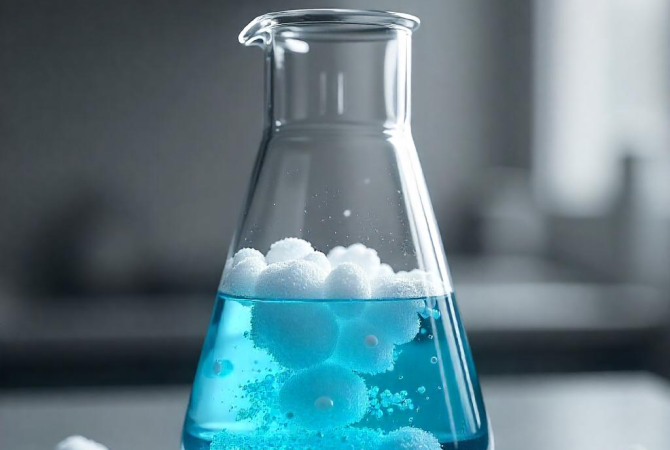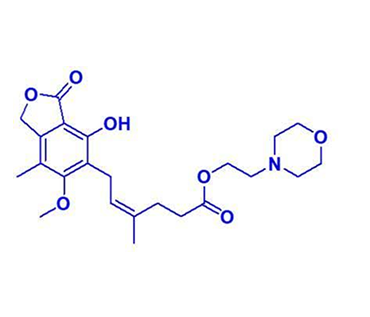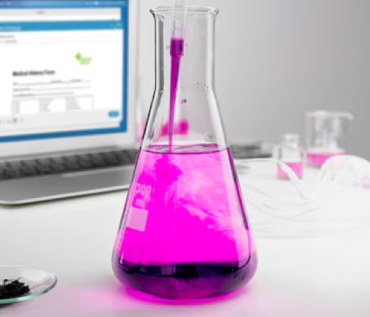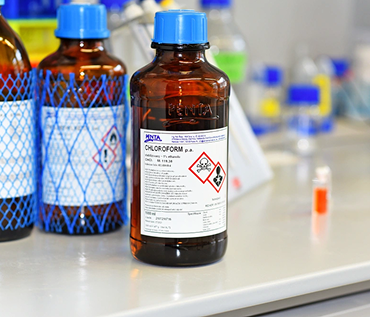Sodium Chloride, commonly known as table salt, is an important chemical used for various industrial purposes and an essential ingredient in every household’s kitchen. In this blog, we unravel the sodium chloride structure, study its chemical reactions, discuss its applications along with potential sodium chloride side effects.
Let’s dive in to learn more!
Understanding Sodium Chloride’s Molecular Structure
Sodium Chloride, or table salt, is a chemical compound with the formula NaCl. It is an ionic compound formed through the sodium chloride formation, in which an ionic bond between sodium and chloride atoms is formed.
The Sodium element is a metallic element belonging to Group 1 (alkali metals) in the periodic table, and Chlorine is a non-metallic element belonging to Group 17 (halogens).
The atomic number of Sodium is 11, and Chlorine is 17.
The electronic configuration of Sodium is: 2, 8, 1
The electronic configuration of Chlorine is: 2, 8, 7
For these two atoms to achieve stability, their octets must be complete, which can be achieved by either losing an electron or gaining one.
In the case of sodium, less energy is required to lose one electron than to gain 7 electrons. Therefore, it loses one electron from the outermost shell electron to achieve stability. In the case of chlorine, to achieve stability, more energy would be required to lose 7 electrons from its outermost shell than gain one electron to achieve a complete octet configuration. Therefore, it accepts an electron in the outermost shell.
In this process of donating and accepting electrons, sodium gains one positive charge (Na+), whereas chlorine gains one negative charge (Cl-).
As a result, these two oppositely charged ions are bonded to each other via a strong electrostatic force between them, resulting in a strong ionic bond formation,
Its atoms are arranged in a cubic crystalline structure, also known as a Face-centered cubic lattice or rock salt structure, where each of the Na+ ions is surrounded by six Cl- ions, and each Cl- ion is surrounded by six Na+ ions, in a 1:1 ratio. This arrangement of atoms creates a highly symmetrical lattice structure and a stable sodium chloride structure.
Exploring the Density and Mass of Sodium Chloride
The face-centred cubic lattice structure of NaCl or the Rock salt structure is responsible for its higher density than that of water. The tightly packed arrangement of sodium and chloride ions increases the amount of matter within the given volume.
The density of pure NaCl is 2.165g/cm3 at Room temperature.
The atomic mass of Na (23 g/mol) and Cl (35.45 g/mol).
The sodium chloride molecular mass is calculated using the formula:
Mass = Atomic Mass of Na+ Atomic Mass of Cl
= 23 g/mol+ 35.45 g/mol
= 58.45 g/mol
Sodium chloride molecular weight calculation is essential when preparing solutions and chemicals.
What Happens When Sodium Chloride Reacts with Water?
Sodium Chloride, when added to the universal solvent, water, undergoes dissolution, producing a sodium chloride solution. In this process, the salt crystals arranged into a tight lattice of repeating units get separated into Na+ and Cl- ions, which disperse uniformly throughout the water.
The Water, made up of H2O molecules, is a polar solvent. Its more electronegative oxygen atom imparts a partial negative charge on the oxygen, and the hydrogen atom has a partial positive charge.
Here’s what happens in the process of dissolution:
NaCl(s) → Na+(aq) + Cl-(aq)
Attraction: The partially positively charged hydrogen atoms of water molecules are attracted to the negatively charged chloride ions. Meanwhile, partially negatively charged oxygen atoms are attracted to positively charged sodium ions.
Dissociation: The force of attraction between the NaCl and H2O is so strong that it leads to breaking the ionic bonds between Sodium and Chloride ions, leading to the separation of ions that are now surrounded by water molecules.
Hydration: The water molecules surrounding these ions form a hydration shell around each ion, protecting it from other ions and keeping them in solution.
As the dissolution process only involves the physical separation of NaCl ions, no new chemical substances are formed. Another key point to remember is that the solubility of NaCl in water increases with temperature, which means you can dissolve more salt in hot water than in cold water.
The Role of Sodium Chloride in Chemical Reactions
NaCl or table salt plays a vital role in several chemical reactions:
Chlor-alkali Process: In this process, the concentrated sodium chloride solution undergoes electrolysis to produce chlorine gas, hydrogen gas, and sodium hydroxide.
Reaction: 2NaCl(aq) + 2H₂O(l) → 2NaOH(aq) + Cl₂(g) + H₂(g)
As this chemical reaction produces chlorine, it is applied to manufacturing PVC, pesticides, dyes, and solvents. Chlorine is also required for bleaching wood pulp and removing lignin in the paper industry.
Precipitation Reaction: When NaCl reacts with AgNO₃, a white precipitate of AgCl is formed.
Reaction: NaCl(aq) + AgNO₃(aq) → AgCl(s) + NaNO₃(aq)
Sodium Chloride Solutions: Characteristics and Uses
Sodium Chloride, when dissolved in water, is called a saline or sodium chloride solution. It exhibits peculiar characteristics such as:
Conductivity: The saline solutions are excellent electric charge conductors because of the free-moving Na+ and Cl- ions.
Osmotic Pressure: The concentration of NaCl ions in a saline solution determines its osmotic pressure. A saline solution with high amounts of NaCl ions has a higher osmotic pressure than the one with lower amounts of NaCl ions. Osmotic pressure is nothing but the tendency of the solvent molecules (water) to move across a semi-permeable membrane to achieve equilibrium of the solute concentrations. The water molecules flow from a region with low osmotic pressure to a region with high osmotic pressure.
Osmolarity: The saline solution is isotonic, meaning it has the same solute concentrations as the bodily fluids.
Sodium Chloride pH level: A saline solution has a pH of 7, which is neither acidic nor basic. The saline solution is neutral.
Solubility: The table salt is highly soluble in water. Due to its high solubility in water, it is used to prepare solutions for different concentrations.
Uses of Saline Solutions:
Owing to its characteristics, the saline solutions are applicable for a variety of purposes in healthcare, food, chemical, and water treatment industries and for research studies in the following ways:
Medical Applications: The sodium chloride solution used here is sterile and has a 0.9% NaCl concentration.
Intravenous Fluids: The isotonic saline solution is used to replenish the electrolytes lost because of dehydration, vomiting, diarrhoea, and loss of blood.
Wound Irrigation: The first and foremost step in cleaning up any dirt, foreign objects, and dead tissue that can hinder the healing process.
Nasal Spray: The Saline nasal spray is used to relieve nasal congestion and moisten the nasal passages. A saline solution is also used to perform Jal Neti in traditional yogic practice for nasal irrigation.
Contact Lens Solution: The saline solutions are also used to store and clean the contact lenses.
Ophthalmic Solutions: It is also used to rinse eyes and remove foreign particles.
Drug Delivery: It is used as a diluent for administering drugs intravenously.
Industrial Applications:
Food Industry: In the food industry, a hypertonic saline solution is used as a food preservative as it inhibits microbial growth. Besides acting as a food preservative, it also acts as a flavour enhancer.
Chemical Industry: A saline solution is used in electrolysis and chemical synthesis in the chemical industries.
Water Treatment: A saline solution is required for water softening and desalination processes in the water treatment industry.
Research Studies:
Buffer Solutions: A saline solution is used for buffer preparation to maintain a stable pH during the experiments.
Cell Culture: It is also used to prepare cell culture media and rinse cells.
Other Uses:
De-icing: A hypertonic saline solution is used to remove the accumulated ice on roads and pavements during the winter.
Cleaning and Rinsing: A hypotonic saline solution is used to clean and rinse delicate equipment to prevent damage.
Sodium Chloride Side Effects
Table salt is usually safe for people when consumed in moderate amounts. However, an excessive intake of it can lead to health issues like Hypertension, Atherosclerosis, Stroke, Kidney damage, Edema, and Osteoporosis. Some studies also indicate a link between high salt intake and increased risk of stomach cancer.
To avoid these sodium chloride side effects, the daily sodium intake for adults of less than 2,3000mg per person is recommended.
Also, one can limit the consumption of processed foods and choose low-sodium alternatives to prevent side effects.
Conclusion
To conclude this blog, we would like to underline the significance of choosing a high-purity salt to achieve a high yield in chemical reactions. Advent is a reliable provider of highly pure, fine and speciality chemicals. Visit our website to order your chemicals now!




